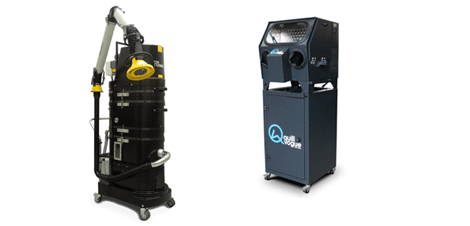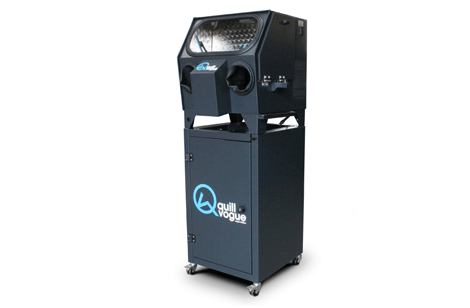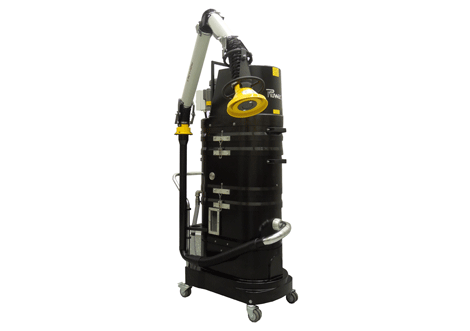
Get some pro-level help cleaning your 3D printed models
Rough weekend? Find yourself waking up in a Japanese family’s rec room? Well you need help my friend, but not as much as people trying to clean up their 3D prints.
The post processing of parts and models is a key part of the whole 3D printing shebang – something we covered earlier this year in our 3D printing for professionals special (still available for free download).
It’s unglamorous, dusty, possibly even toxic, it causes delays and bottle necks in the development and production of parts, so as a result there’s a lovely little sideline of companies solving the problems and speeding up the workflow for a variety of machines and processes.

The Quill Vogue wash station – lets you blast the support material away
The Quill Vogue Wash Station has been designed to make it faster and easier to clean parts, with a quick release coupling for exchanging nozzles to blast out dissolvable support materials.
This allows different power and shaped jets of water to be used within the cleaning process, ensuring even the most stubborn of support materials is removed from your prints, without damaging interfaces between different model materials.
Useful for long periods of use, it’s pretty quiet at 60 decibels (think background conversation).
The Quill Vogue team has also upgraded the internal wash chamber with the introduction of marine grade 316 stainless steel chosen for longevity. Steve Zissou would be a fan.

The Ruwac NA35 – mobile and with a swing-arm, it’s an industrial vacuum to stop sinter dust from going boom
If a blast clean is not your bag, how about some safe suction? With sintering materials using explosive or impact sensitive materials that may contain an ignition source (such as aluminum, titaniumor zirconium) and other volatile dusts, you want something that can remove them safely – hence the Ruwac immersion separator vacuum.
The Ruwac NA35 immersion separator collects explosive or glowing media particles entering the vacuum and immediately mixes them in a turbulent liquid bath. From there, moving air and liquid are rapidly forced onto the materials, submerging and neutralising them in the process in the vacuum’s water filter system.
Effectively – this stops it all from going ‘boom’ – guaranteeing a “safe, explosion-proof work environment”, which is what we al would like in an ideal world.
Newly redesigned features of the NA35 include a direct fill with garden hose connector to back-wash the dispersion screen and easily replace water contents.
A sanitary stainless steel ball valve now acts as the primary source in releasing filtered contents – eliminating any heavy lifting required to empty the vacuum in the process – while a discharge filter assembly attachment safely collects sludge and debris build-up from inside the vacuum into a 5 micron bag.
An optional level detector sensor can now shut down or refill the unit automatically once low liquid levels are detected, and it’s relatively quiet operation is provided through single or three phase electric motor designs, or a single air-powered venturi.
An optional fume and dust extraction swing arm can also be attached to the unit to safely collect airborne dusts, gases, smoke and particles during the vacuum process.
Find out more about 3D printing and all the technologies involved in our free 3D printing special edition – download it here






